
Microphone polar patterns are an essential aspect of audio capture and recording, yet many people are not aware of their importance or how to choose the right one for their needs. Simply put, the polar pattern of a microphone refers to the way it captures sound in relation to its physical orientation. Understanding the different polar patterns and their characteristics is key to achieving professional-quality recordings and getting the best performance from your microphone.
In this article, we'll take a comprehensive look at the various polar patterns, including omnidirectional, cardioid, bidirectional, shotgun, supercardioid, and hypercardioid. We'll explore their best use cases and talk about the benefits of each. We'll also discuss how you can combine polar patterns to achieve even greater versatility in your recordings.
Whether you're an aspiring audio engineer, podcaster, or simply looking to improve the quality of your home recordings, this guide will provide you with the information you need to make informed decisions about microphone polar patterns.
There are many options when it comes to microphone polar patterns. Depending on your application, you must choose wisely to get the best result. With these microphone polar patterns explained, you'll discover which one is best for your scenario. Let's begin with omnidirectional.

An omnidirectional polar pattern is a microphone configuration in which the microphone captures sound equally from all directions. This pattern is often referred to as a "360-degree" pattern, as it has a spherical sensitivity and captures sound from all angles.
Omnidirectional microphones are ideal for capturing ambient sounds and room tone. They are also great for recording large groups of people or instruments. Their biggest downfall is that they are prone to unwanted background noise and are more susceptible to feedback in live sound reinforcement settings.
NOTE: An omnidirectional microphone has the flattest frequency response of them all.
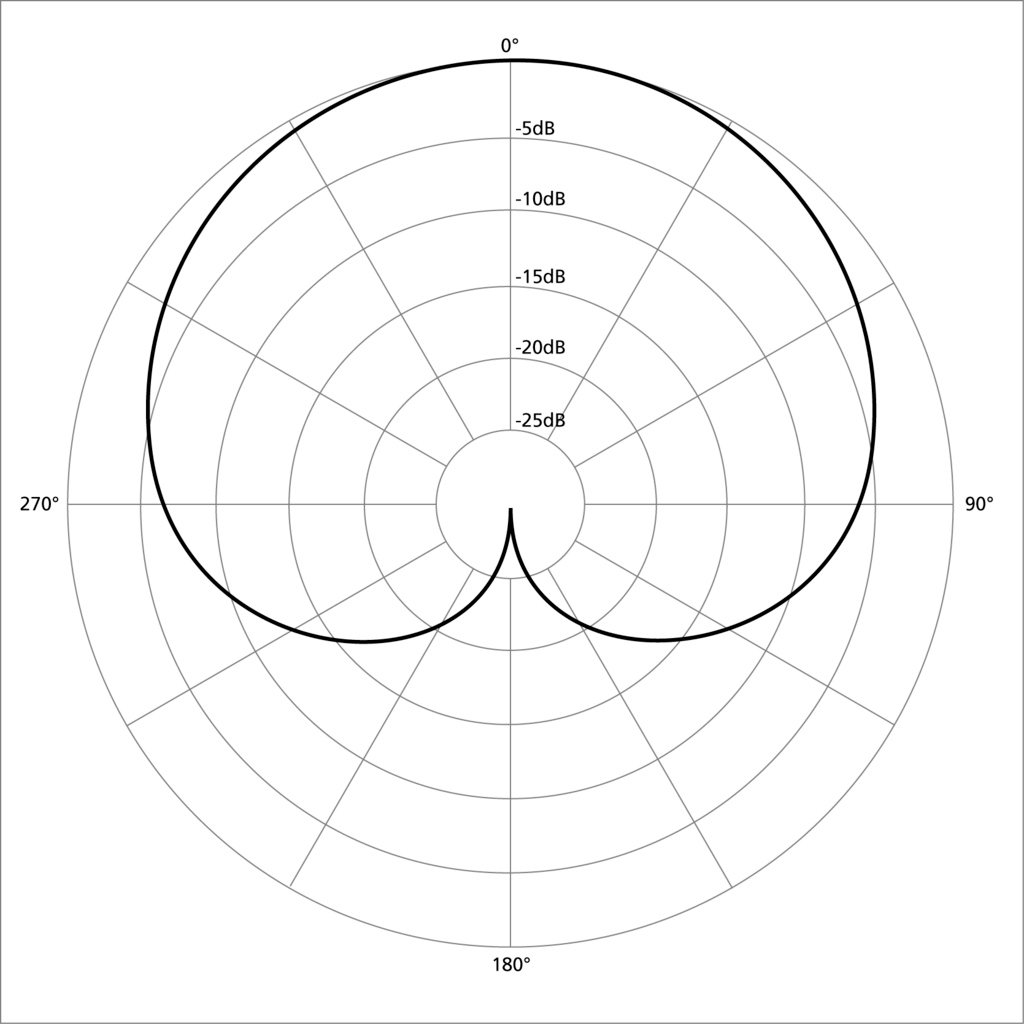
A cardioid polar pattern is a microphone configuration that has a heart-shaped look. For us immature engineers, we describe it as the "butt pattern". It captures sound primarily from the front while rejecting it from the sides and rear. This pattern is useful in isolating a specific sound source in a noisy environment, as it minimizes background noise and unwanted sounds.
Cardioid microphones are commonly used in live sound reinforcement, podcasting, and voiceover recording, where the focus is on capturing a single source with minimal bleed from other sources. They are also popular for recording musical instruments, such as guitar amplifiers and drums, as they can provide a clear and defined sound with good isolation. However, care must be taken in positioning the microphone, as off-axis sounds may not be captured as effectively with a cardioid pattern.
NOTE: The cardioid polar pattern is the best gain-before-feedback option out there.
Related Article: The Top 5 Best Mics For Podcasting | Professional Options For All Budgets
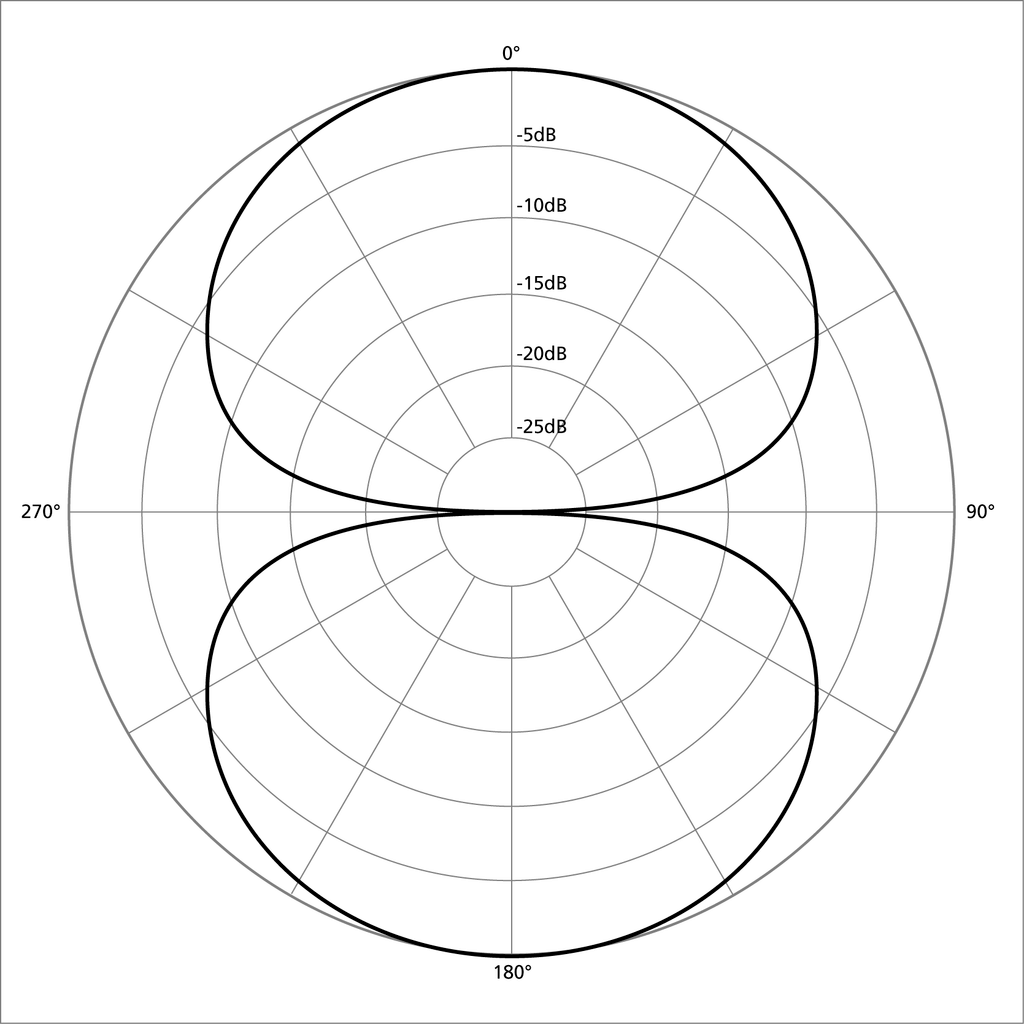
A bidirectional or figure-eight polar pattern is a microphone configuration that captures sound equally from two opposite directions, while rejecting sound from the sides. This pattern is often referred to as a "figure-eight" because it resembles the shape of the number "8".
Bidirectional microphones are commonly used in stereo recording setups, where two microphones are positioned facing each other to capture a balanced stereo image. They are also useful for recording interviews or duets, as they can capture sound from both participants simultaneously. However, bidirectional microphones can also pick up more background noise than other polar patterns, as they are sensitive to sound from the sides, making them less ideal for use in noisy environments.
NOTE: All ribbon microphones use the bidirectional polar pattern.
Check out my favorite bidirectional microphone: Royer R-121
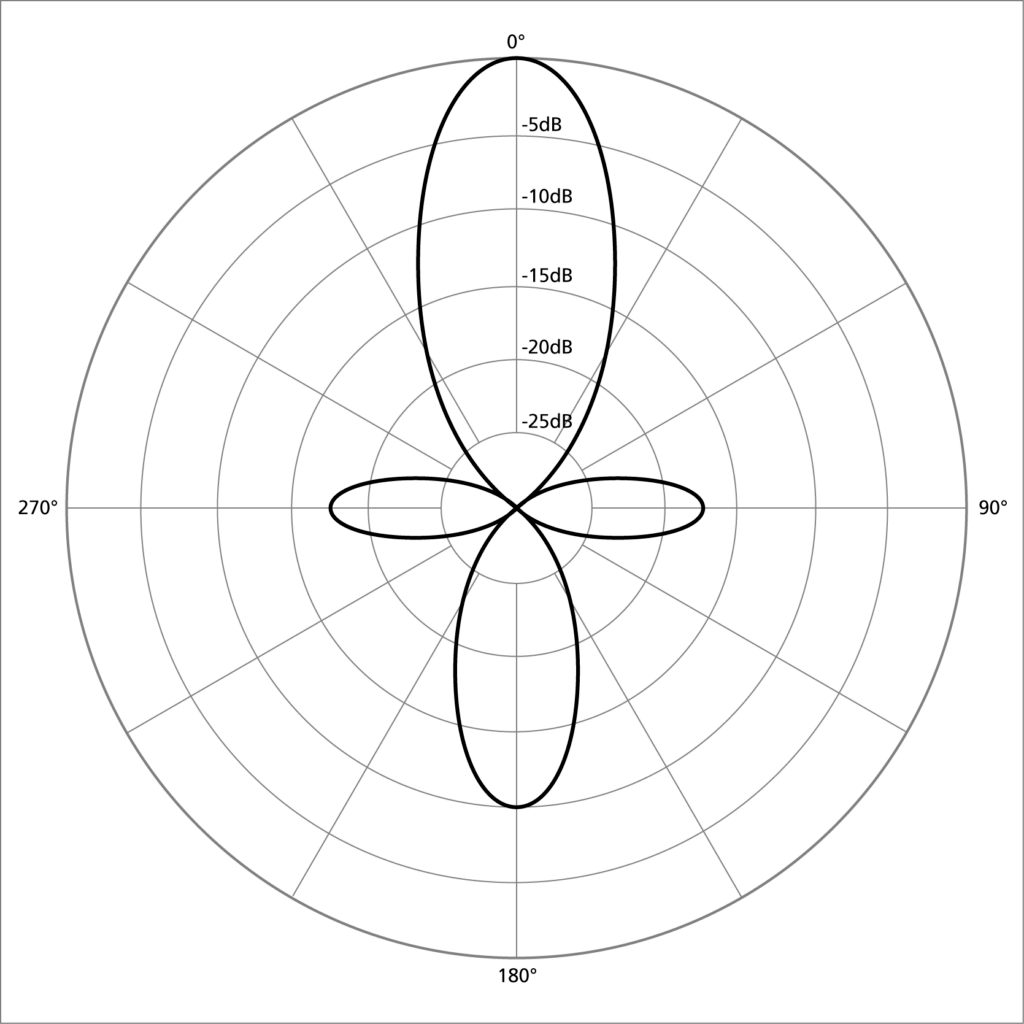
A lobar polar pattern is a highly directional microphone configuration that captures sound from a narrow and focused area, while rejecting sound from the sides and rear. This pattern is useful for isolating a specific sound source in noisy environments or for capturing distant sounds without picking up surrounding noise.
Shotgun microphones, which use the lobar pattern, are often used in film and video production, as they allow for clear and focused capture of dialogue or sound effects without capturing ambient sounds. They are also commonly used for field recording, as they can pick up sound from a distance without the need for close proximity to the source. However, because of the narrow microphone directionality, they require pinpoint placement to capture optimal quality.
NOTE: The lobar polar pattern is the most directional of them all.
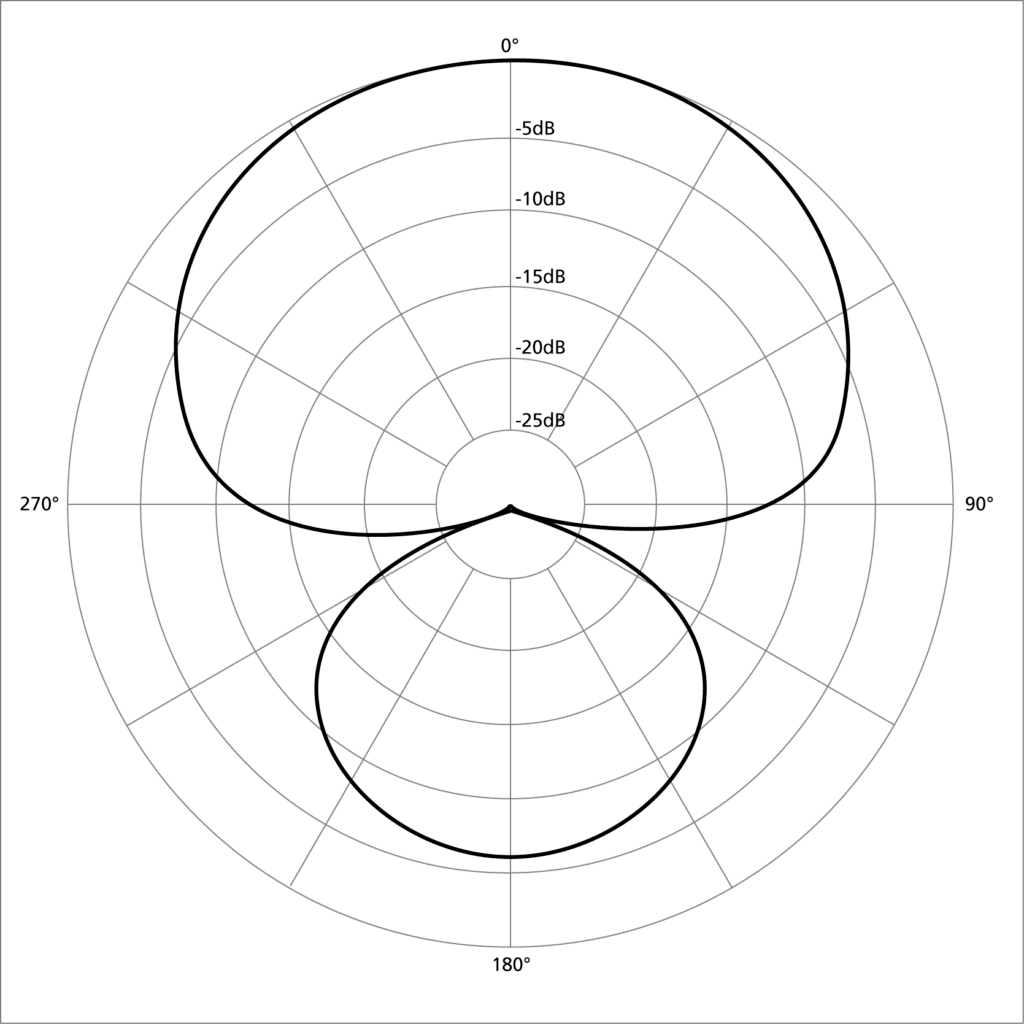
A hypercardioid microphone has a directional pickup pattern that is more directional than a cardioid microphone. It captures sound primarily from the front and sides of the microphone, and has a smaller pickup area from the rear compared to a cardioid. This makes it ideal for isolating a specific sound source, such as a single instrument or voice, from other sources in a live performance or recording environment.
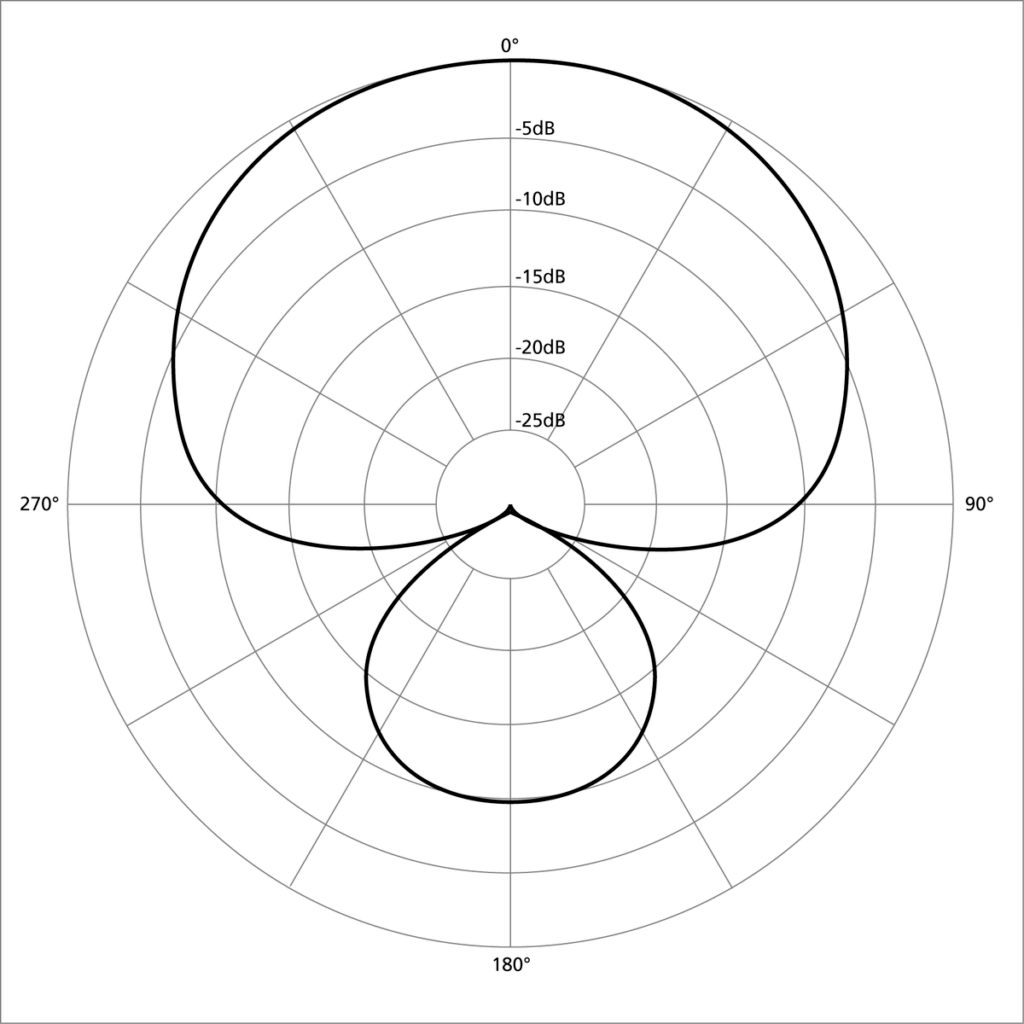
A supercardioid polar pattern is even more directional than a hypercardioid. It has a narrower pickup area in front and stronger rejection of sound from the sides and rear. This makes it the most directional of all mic polar patterns and it is often used in situations where a highly directional microphone is required, such as capturing sound from a particular performer in a crowded or noisy environment.
Microphone polar patterns are frequency-dependent. This means that their sensitivity to sound from different directions can vary depending on the frequency of the sound being recorded. This is because different frequencies of sound can have different wavelengths, and these wavelengths can interact with the physical shape of the microphone in different ways.
For example, low-frequency sounds have longer wavelengths and are more likely to be captured evenly by a microphone, regardless of its polar pattern. However, high-frequency sounds have shorter wavelengths and are more affected by the directional characteristics of the microphone. This means that the polar pattern of a microphone can appear to change as the frequency of the sound being recorded changes.
To account for this frequency-dependence, microphone manufacturers often provide a frequency response graph for their microphones. This shows the level of output that the microphone produces for different frequencies of sound. It gives an indication of how the polar pattern of the microphone will change as the frequency of the sound being recorded changes.
Understanding this frequency-dependence is important for choosing the right microphone for a given recording or live performance situation.
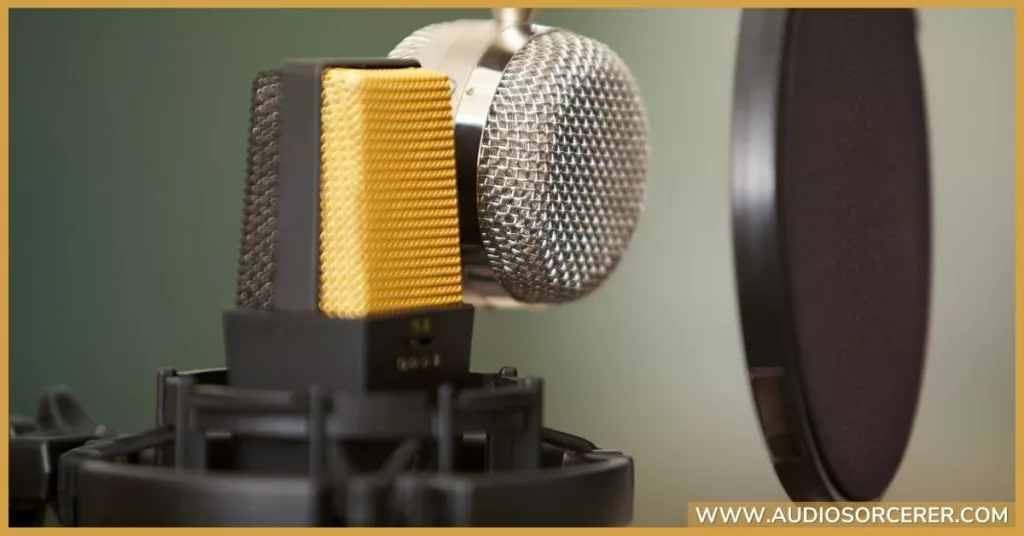
Combining microphone polar patterns involves the use of multiple microphones with different directional characteristics to capture audio in a specific environment. The objective is to combine the signals from these microphones in a way that results in a desirable and coherent audio signal.
There are different methods for combining microphone polar patterns, each with its own advantages and disadvantages. One common method is to use an array of directional microphones, such as cardioid or supercardioid microphones, arranged in a specific configuration. The signals from these microphones are then combined using an audio mixer or interface. Another method is to use omnidirectional microphones in combination with directional microphones. The omnidirectional microphones provide a full-sphere coverage of the audio environment, while the directional microphones are used to capture specific sound sources.
It is important to consider the polar patterns of the microphones when combining them, as well as the acoustic properties of the environment, in order to achieve the desired audio signal. For example, in a live concert scenario, directional microphones can be used to capture the sound of specific instruments, while omnidirectional microphones can be used to capture the overall ambient sound of the concert. The signals from these microphones can then be blended to create a balanced and natural-sounding recording.
The microphone proximity effect is a phenomenon in audio engineering that occurs when a directional microphone is positioned close to a sound source. As the distance between the microphone and the sound source decreases, the bass response of the microphone increases. This results in a pronounced bass boost that can have a significant impact on the tonality of the recorded sound.
The proximity effect is most pronounced in directional microphones with a cardioid or hypercardioid polar pattern. It is often used creatively by audio engineers to enhance the bass of a recording or to add a sense of proximity and intimacy to a performance.
It is important to be aware of the proximity effect and to adjust the microphone placement accordingly when recording or performing.
Related Article: What Is The Microphone Proximity Effect And Why Should You Care?

A multi-pattern microphone allows users to switch between several polar patterns, such as cardioid, omnidirectional, and figure-eight. This versatility enables the user to choose the best polar pattern for a given recording or live performance situation.
Multi-pattern microphones typically have a switch or control to select the desired polar pattern. Some high-end multi-pattern microphones also offer adjustable polar patterns, allowing for further customization and fine-tuning of the microphone's directional characteristics.
This versatility makes multi-pattern microphones a popular choice for recording engineers, live sound technicians, and podcasters.
Neumann U87: The Neumann U87 is a classic multi-pattern microphone that has been widely used in studios for over 30 years. It features a switchable polar pattern that allows users to select between cardioid, omnidirectional, and figure-eight patterns, making it a versatile choice for a wide range of recording applications.
Warm Audio WA-47: The Warm Audio WA-47 is a high-quality condenser microphone that is designed to capture audio with exceptional clarity and detail. With a large-diaphragm, the WA-47 delivers a warm, rich and full sound that is ideal for vocals, acoustic instruments, and room recording. It features 9 different polar patterns allowing for ultimate flexibility. With a high SPL handling and low self-noise, the WA-47 is a reliable and cost-effective alternative to other high-end microphones on the market.
AKG C414: The AKG C414 is a legendary multi-pattern microphone that has been used on countless recordings over the years. It offers nine selectable polar patterns, including cardioid, omnidirectional, and figure-eight, as well as adjustable high-pass and low-pass filters. The C414 is widely considered one of the best multi-pattern microphones on the market.
In conclusion, microphone polar patterns are a crucial aspect of audio engineering and play a vital role in determining the sound quality of a recording or live performance. Understanding the different polar patterns and how they affect the sound that is captured is essential for making informed decisions when choosing microphones. Additionally, the frequency-dependence of microphone polar patterns and the proximity effect must be taken into consideration when setting up a recording or live performance. Multi-pattern microphones offer versatility and flexibility, making them a popular choice for all. By considering these factors, you can ensure that you choose the right microphone for your needs and achieve the best possible sound quality.
"Some of the links within this article are affiliate links. These links are from various companies such as Amazon. This means if you click on any of these links and purchase the item or service, I will receive an affiliate commission. This is at no cost to you and the money gets invested back into Audio Sorcerer LLC."